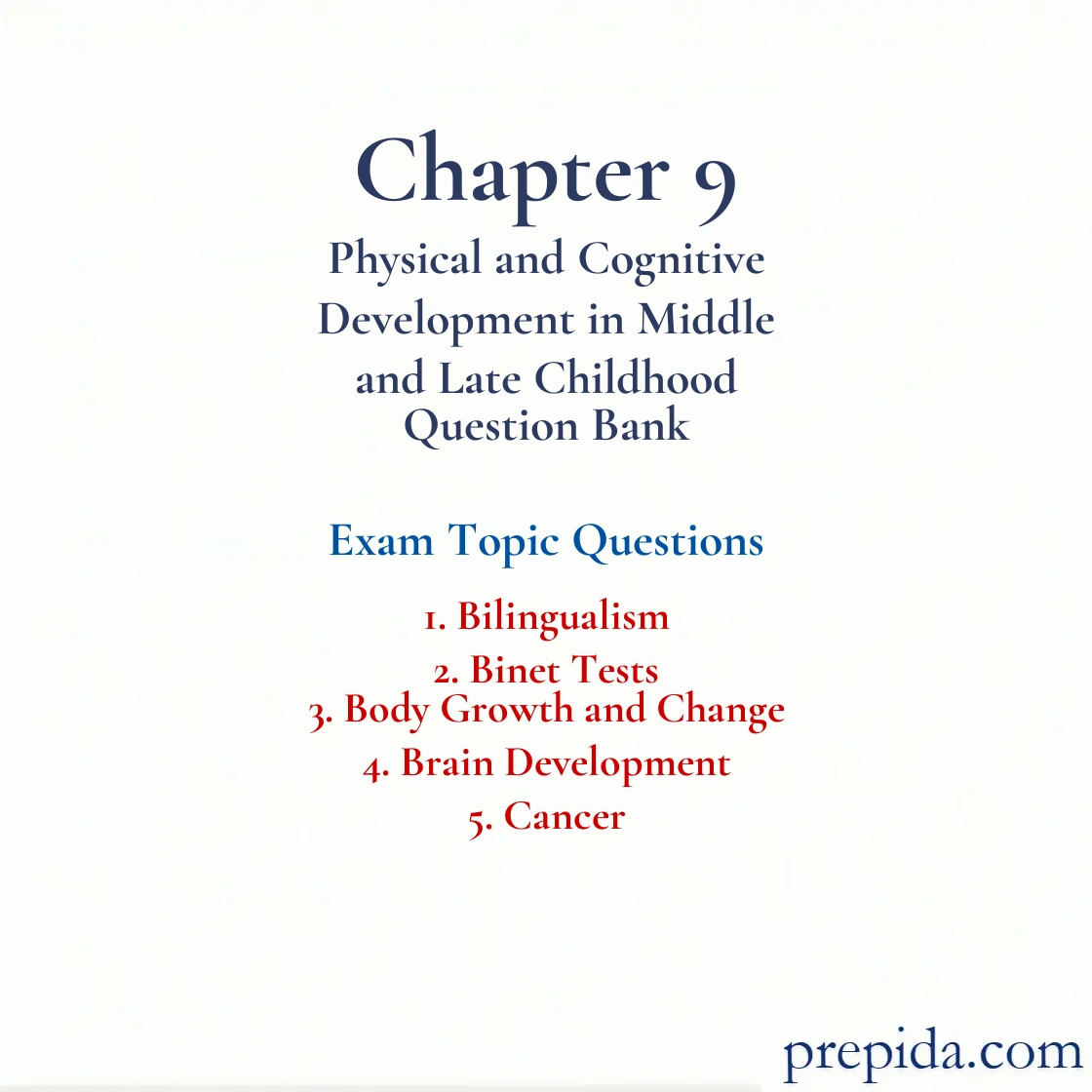
Before she started school in the United States, Mita, daughter of immigrant parents of Indian origin, used to speak only her native language, Hindi, fluently. She then learned to speak English in school and attained fluency in both Hindi and English. However, as she grew older, she started to feel ashamed of her roots and gave up speaking Hindi altogether. This phenomenon is called ________ bilingualism.
- subjective
- relapsed
- subtractive
- retractive
Language: A form of communication, whether spoken, written, or signed, that is based on a system of symbols. Language consists of the words used by a community and the rules for varying and combining them.
Which of the following statements about children who are bilingual is true?
- Children who are bilingual have a larger vocabulary in each language than children who are monolingual.
- Children who are bilingual are better at analytical reasoning than children who are monolingual.
- Children who are bilingual are less conscious of the structure of spoken language than children who are monolingual.
- Children who are bilingual have lower cognitive flexibility than children who are monolingual.
Which of the following statements is true about second-language learning?
- For adolescents and adults, new vocabulary is easier to learn than new sounds or new grammar.
- Children's ability to pronounce words with a native-like accent in a second language typically increases with age.
- Sensitive periods for learning a second language are constant across different language systems.
- Adults tend to learn a second language slower than children, but their final level of second-language attainment is higher.
Language: A form of communication, whether spoken, written, or signed, that is based on a system of symbols. Language consists of the words used by a community and the rules for varying and combining them.
Amber is given a Stanford-Binet intelligence test. Her mental age is determined to be 14, and her chronological age is 10. Which of the following is true of Amber?
- Her IQ score is 86.
- Her IQ score is about average.
- Her IQ score is below the majority of the population.
- Her IQ score is above the majority of the population.
Intelligence: Problem-solving skills and the ability to learn from and adapt to the experiences of everyday life.
During the elementary school years, children grow an average of ________ inches a year.
- one to two
- two to three
- five to seven
- seven to ten
A-not-B Error: Error that occurs when infants make the mistake of selecting the familiar hiding place (A) rather than the new hiding place (B) of an object.
Kimberly is 7 years old. She asks her mother to buy her clothes at the start of the new academic year. However, her mother tells her that she won't buy too many clothes now as Kimberly will grow them out soon. She expects Kimberly, on an average, to gain ________ pounds per year during middle and late childhood.
- 1 to 2
- 2 to 3
- 5 to 7
- 7 to 10
During elementary school years, head circumference and waist circumference
- increase in relation to body height.
- decrease in relation to body weight.
- increase in relation to body weight.
- decrease in relation to body height.
Advances in the ________ of the brain are linked to children's ________.
- parietal lobe; peripheral vision
- occipital lobe; improved spatial skills
- prefrontal cortex; improved attention, reasoning, and cognitive control
- temporal lobe; hand-eye coordination and pincer grasp
Cognitive Control: Effective control of thinking in a number of areas, including controlling attention, reducing interfering thoughts, and being cognitively flexible.
Which of the following statements is true about cancer in children?
- The most common cancer in children in the United States is lung cancer.
- Children with cancer are surviving for a shorter period than in the past.
- Cancer is the leading cause of death in children in the United States.
- One in every 330 children in the United States develops cancer before the age of 19.
Lillette, 9, has been diagnosed with ________, a cancer in which the bone marrow manufactures an abundance of abnormal white blood cells that crowd out normal cells, making her susceptible to bruising and infection.
- neuroblastoma
- lymphosarcoma
- leukemia
- clear cell sarcoma
Crowd: A larger group structure than a clique that is usually based on reputation; members may or may not spend much time together.
The incidence of cancer in children has ________ in recent years.
- been linked to obesity
- increased dramatically
- increased slightly
- decreased dramatically
Small For Date Infants: Also called small for gestational age infants, these infants’ birth weights are below normal when the length of pregnancy is considered. Small for date infants may be preterm or full term.
Children with cancer
- are rarer today than in the 1960s.
- are dying earlier today than in the 1960s.
- are surviving longer today than in the past.
- are yet to receive the benefits of advancements in cancer treatment.
Life Expectancy: The number of years that will probably be lived by the average person born in a particular year.
Which of the following is the second leading cause of death in U.S. children five to fourteen years of age?
- cardiovascular disease
- cancer
- motor vehicle accidents
- drowning
Anger: Kübler-Ross’ second stage of dying, in which the dying person’s denial gives way to anger, resentment, rage, and envy.
Which type of cancer is most prevalent in children?
- leukemia
- lung cancer
- brain cancer
- melanoma (a form of skin cancer)